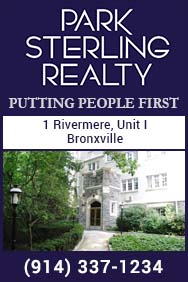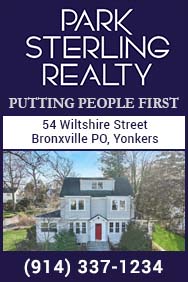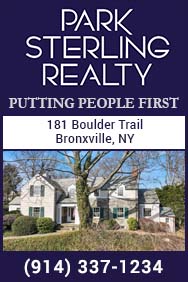From the Mayor: The Origin of Villages

Pictured: Mayor Mary Marvin. Photo by N. Bower
By Mary Marvin, Mayor of Bronxville
Feb. 14, 2024: It seems our own Westchester County, more than any other municipal jurisdiction I can think of, has communities of every governmental classification including hamlet, village, city, town, villages within towns, towns coterminous with villages, unincorporated areas etc. and we seem to use the designations indiscriminately not really understanding why the differences or the reasoning behind such incorporations.
To that end, I thought I would delve into the origins of villages since we just celebrated our 150th anniversary as the Village of Bronxville.
In New York State, a village is a general purpose municipal corporation formed voluntarily by the residents of an area to provide themselves with municipal services. However, when villages are created, its area still remains a part of the town where it is located, and the residents continue to be residents and taxpayers of that town as well.
Waterford, the first village in New York, was incorporated at the end of the 18th century, however the Village form of municipal government did not become a prominent feature until the state’s growth of metropolitan areas between 1900 and 1950. Many people think villages have to be small by definition but in New York a village is just a legal concept. As example, the largest village in the state, Hempstead, Long Island, has more than 53,000 residents while the smallest city, Sherrill, has a population of 3074.
A Village is a municipality, which at the time of incorporation, met statutory requirements of New York State versus a hamlet, which is actually not a formal community like a city, town or village. The earliest of New York’s villages were formed because clusters of people in otherwise sparsely settled areas wanted to secure fire or police protection or other public services, then not available.
The term village first appeared in state law in 1794 incorporating Waterford and the state constitution of 1846 required that the legislature “provide for the organization of cities and villages.”
In the first 40 plus years of the 20th century, as people moved from cities into the suburbs, more than 160 villages formed under village law.
The rapid growth of towns in suburban areas, especially following World War II, emphasized the need for alternatives to small villages to provide services, As a result, suburban areas made increasing use of a “town” improvement district.
This had a profound effect on villages as post WWII, only 27 new villages appeared, and 26 villages dissolved as of 2012.
In 2018, there were 535 villages in New York, and they range in size from the Village of Dering Harbor with a population of 11 to the Village of Hempstead with the aforementioned 53,000+ residents with the majority of villages having populations under 2500.
Villages including nearby Scarsdale, Harrison and Mount Kisco are coterminous with towns of the same name, which is a very unique form of shared government.
The legislative body of a village – the Board of Trustees - is composed of a Mayor and four Trustees, notwithstanding, a board may increase or decrease the number of trustees subject to village referendum.
Trustees are elected for two-year terms, unless otherwise provided by local.
Trustees’ duties include:
-adopting a budget and providing for the financing of village activities.
-abolishing or creating offices, boards, agencies and commissions, and delegating powers to these units.
-managing village properties, and
-granting final approval of appointments of all non-elected officers and employees.
A majority of the Board as fully constituted is a quorum and no business may be transacted unless a quorum is present.
The Mayor is elected for a two-year term and presides over all meetings of the Board of Trustees though having no veto power and must vote to break a tie.
Subject to the approval of the Board of Trustees, the Mayor appoints all department and non-elected officers and employees, executes contracts approved by the Board of Trustees, sign checks and cosigns with the clerk any orders to pay claims.
At the annual meeting of the Board of Trustees in April, the Mayor appoints one of the trustees as Deputy Mayor. In the mayor’s absence, the Deputy Mayor is vested with and may perform all the duties of the Mayor’s office.
In order to provide full-time administrative supervision, some villages have created the office of a Village Manager or Village Administrator assigned day-to-day administrative functions. Our Village Administrator, James Palmer, came to us almost ten years ago from a similar position in Mount Kisco.
The Board of Trustees may also establish the office of Village Justice. Where no Village justice is established or subsequently abolished, the functions devolve on the Justices of the town in which the village is located.
The power to zone the area within a village separately from the remainder of the town provides an incentive for village incorporation. The 1972 re-codification of New York State Village law continues the authority of a Board of Trustees to regulate land-use, lot sizes and density of development. Commensurate with this responsibility is the obligation to establish a Zoning Board of Appeals to hear appeals from decisions made by the village official designated to enforce zoning regulations.
As to the relationship of a village within a town, which is our case and that of Tuckahoe in the Town of Eastchester, Village residents are liable for payments of taxes to the town in which their villages are located as well as to the village in which they reside.
Alleviating a major expense, the State Highway Law exempts Village residents from paying the cost of repair and improvement of town highways thus relieving villages of a substantial portion of town maintenance expense.
Unless exempted by a town board however, Village residents must contribute to the cost of town highway equipment and snow removal on town roads.
The question of who should pay for what services has been a perpetual source of contention between towns and villages since the 1950s, but it is one that can be resolved through local cooperative action. Many municipalities, such as ours, engage in cooperative purchasing and other joint services including road repaving contracts, and specialty vehicle purchasing.
New York’s governmental history is a fascinating read as it appears to mirror no other state.















